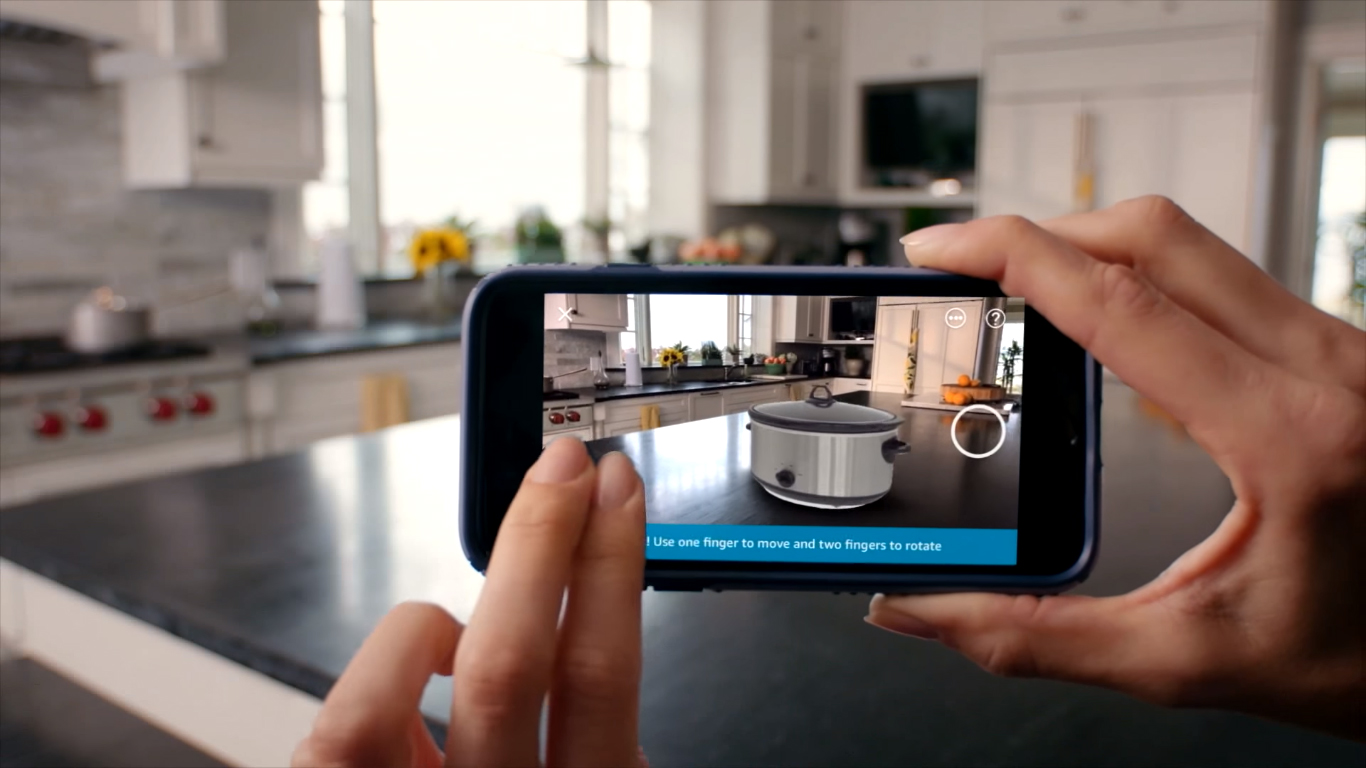AR and VR in e-commerce – a tale of two technologies
Written by
Editorial TeamPublished on

Have you ever wondered what the commerce of the future would look like? Innovative tools are already here, trying to become your best assistants, while the Internet itself is becoming bigger and bigger each day. Every time we’re convinced that nothing more can surprise us, there’re new technologies knocking on our e-commerce door. AR and VR, we’ve been waiting for you – come in, make yourself comfortable and take us to the world we didn’t expect to exist!
AR and VR – things one needs to know
Here we are, discussing the technologies that are quite popular, yet still don’t play first fiddle. The fact is that both AR and VR enable users to experience things that few decades ago were only a sci-fi literature’s domain. Let’s peer at the concept of augmented and virtual reality, and gather some basic information.
-
AR (augmented reality) – layers of digital information appearing over the physical world in real time. This technology often involves the use of a tablet or a smartphone. AR provides users the same level of freedom they’re given in their real life. It enhances the surrounding area and expands it with a computer-generated input.
-
VR (virtual reality) –a digital space, often experienced through a head-mounted display. The technology enables users to experience and interact with a 3D environment. VR provides a feeling of physical and mental presence in the artificial world generated by software.
As you can think, the potential of both technologies in everyday life could be huge but have we used all available options yet? The answer seems to be obvious – this adventure has just begun. According to Capgemini Research Institute, the biggest investors in AR and VR solutions are USA and China, where several companies have already implemented immersive technologies for business operations. Companies based in countries like Germany or France are taking things slow and prefer to experiment with possible solutions. This doesn’t mean that the situation won’t change, as the report based on the above-mentioned study draws a conclusion that by 2021 approx. 50% of the surveyed companies that aren’t currently interested in exploring AR and VR technologies, plan to do so. McKinsey, on the other hand, states that AI including AR and VR will become the driver of the German industry by the year 2030.
When it comes to AR and VR, there’re several advantages, resulting from implementing them in your retail business. If we were to point out a few of them, that would be:
- Increased store visits,
- Better consumer engagement,
- Reduced product return rate,
- Customizable content.
How to use and not lose?
Although we’re just at the beginning of our adventure with AR and VR, there’re already some case studies you may find interesting, especially when analyzing these technologies in terms of implementation within the e-commerce market:
iPads equipped with an AR component

In Germany, Cola-Cola has given its salesmen iPads equipped with an AR component and optimized sales process. The component allows potential customers to preview how vending machines will look like in their stores.
Jaguar AR experience during I-PACE car in Berlin
[su_youtube url=”https://www.youtube.com/watch?v=YHTX6byJvB8″]
Jaguar has used AR experience during a launch campaign of its I-PACE car in Berlin. Thanks to camera systems, the audience was enabled to interact with a visualization of this fully electric car.
Ikea APP named Place
[su_youtube url=”https://www.youtube.com/watch?v=UudV1VdFtuQ”]
IKEA has introduced an AR app named Place, which enables Apple users to set IKEA furniture in their apartments and preview an interior before buying products. Thanks to this solution potential customers can choose furniture easier.
First country to launch a VR store
[su_youtube url=”https://www.youtube.com/watch?v=yAuiXhJPnr8″]
Australia was chosen to become the first country to launch a VR store. Thanks to the collaboration of Myer and eBay, customers can immerse themselves in a different e-commerce experience and complete their purchase via app.
Can AR and VR affect the world of e-commerce?
The answer is – it already has affected e-commerce industry, however not on a mega-scale. We’re pretty sure that AR and VR will boost in the upcoming years, as implementation opportunities are vast. AR could be integrated into existing technologies, and thus it enables users to interact with products on a new level – they can try different styles without leaving their homes. Over the course of time, both AR and VR technologies will be changing e-commerce we know today. Immersive experiences while exploring offers and 360° view of products are tempting for sellers and customers. Let’s see what the future will bring!


